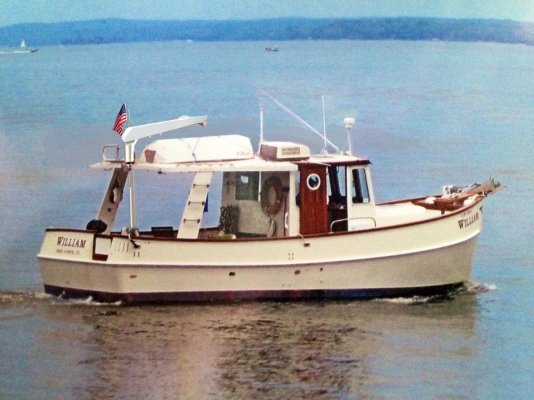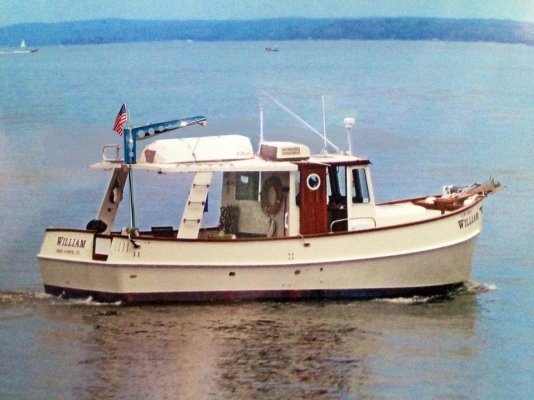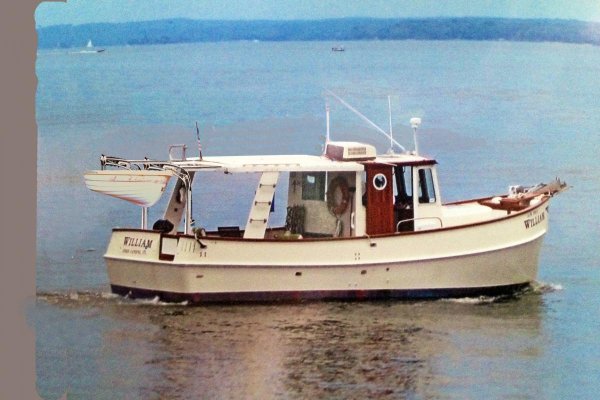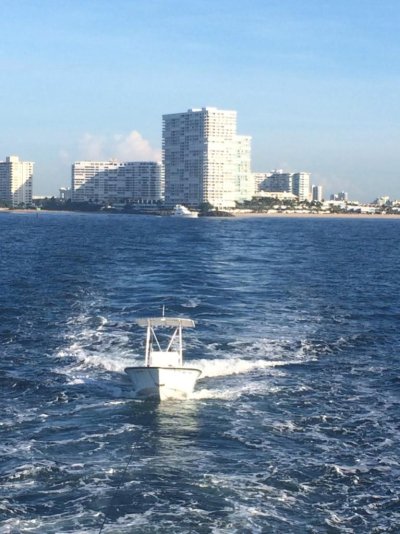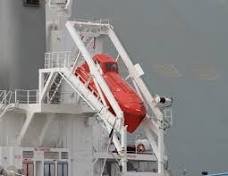The towed skiffs have the best chance to leave the mothership without broken arms/fingers and legs in my opinion.
That was the opinion of a pair of very experienced boater I had a chat with some years ago out in the islands.
While a Livingston is a great, non-destructible, infinitely long lasting dinghy, in the smaller sizes like 9' it is not a rough water boat because with any kind of load in it the freeboard is minimal. Also, they are limited to low-powered outboards.
So we decided that when and if the time comes that we can take longer cruises up the BC coast that we'll buy, rent, or borrow a 10' Bullfrog with a 15hp motor. Same floatation as an inflatable, but since it doesn't use fabric tubes for floatation, it doesn't have the vulnerability on rocky shores and the finite life of an inflatable.
But it's heavy. We've seen them carried on swimsteps using Seawise Davits. but the swimstep has needed major reinforcement in each case.
One day out in the islands I noticed a beautifully maintained 1960s wood Chris Craft about 36-40 feet long. It was the model that looks a bit like a sport fisherman with the main cabin and helm farther aft and a relatively short cockpit.
There was a 10' Bullfrog in the water behind it but there was no place obvious on the Chris Craft to carry it. So I motored over and asked the owners how they carried the dinghy.
They didn't, they said, they towed it. When I asked them how it towed, they said great, even at their 16 knot cruising speed or at slower speeds in "bouncy" water in the Strait of Georgia.
They were long-time boaters, having run various kinds of boats in the PNW and along the Atlantic seaboard and out in the open ocean. They said that they had experienced a boat fire once that had forced them off the boat in a hurry. From then on, they said, they always towed their dinghy/tender even if the main boat could carry it on board.
They felt that carrying a dinghy on a boat deck or cabin top was a recipe for disaster in an emergency. They felt that a swimstep or transom davit setup was world's better than a boat deck or cabin top, but that the only truly viable method in an emergency was to have the dinghy/tender in the water already.
In their view it wasn't a matter of "if the dinghy tows well," but "buy a dinghy that does tow well."
I've been there, done that, got the T-shirt as far as open ocean boating from my years in Hawaii, and my wife has zero interest in it so we will not be doing that kind of boating. But I asked them about towing in the ocean with its big swells and waves. Their reply was that, in their case, they bought a really big tender to tow and made sure it would tow well in rough ocean conditions. They also mentioned purpose-built life rafts, although I don't remember him saying they'd had one on the boat they'd used in the Atlantic.
But never again, they vowed after their fire, would they go boating without having their dinghy or tender in the water at all times.

